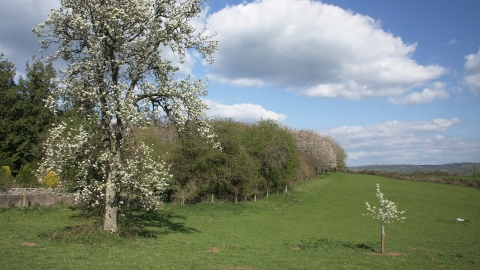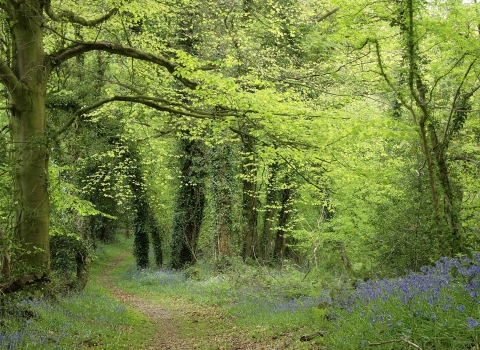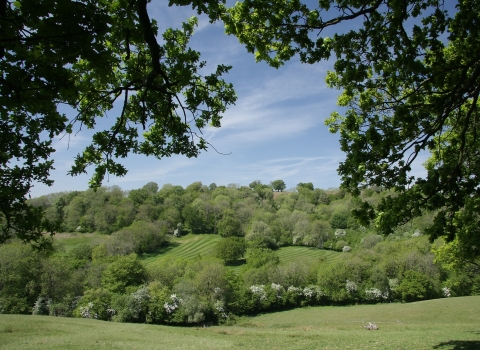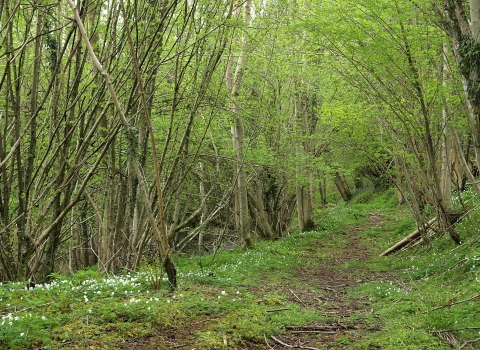
Jane Corey
Kitty's Orchard
Know before you go
Dogs
When to visit
Opening times
Open at all timesBest time to visit
Spring and summerAbout the reserve
Tucked away in the middle of Gwent, Kitty’s Orchard is a hidden gem.
In the woodland, wildflowers like bluebells, ground ivy and broad-leaved helleborine lurk in the undergrowth. Pass through the gate at the southern end of the woodland and the meadow opens up before you. In late-spring and summer, it is a mesmerizing sea of yellow, pink and white with swathes of hay rattle, red clover, eyebright and yellow-topped cat’s-ear to name but a few. With such a floral feast on offer, the meadow fills with pollinating insects like meadow brown and peacock butterflies and buzzing bees. The mature hedgerows of hawthorn and blackthorn bordering the meadow also provide food and cover for a wide range of birds and small mammals.
What we do here
We are working hard to increase species diversity at Kitty’s Orchard. In the woodland we have planted native bluebell seeds and strewn the meadow with hay from flower-rich reserves to introduce wildflower seeds. We follow a traditional management regime in the meadow by using sheep to graze the land after the late-summer hay cut. This reduces the dominance of unfavourable grasses and allows wildflowers to establish and thrive.
Orchards are in decline in the UK but they are an incredibly valuable habitat for wildlife, providing food and shelter for many birds and insects throughout the year. Preserving and increasing this habitat is an urgent priority so we have planted a number of young fruit trees around the remaining mature pear tree to restore our own orchard. In 2015, we thinned the small woodland plantation to make it better for wildlife.
History
The 1845 tithe map of the area shows horse stables and paddocks once stood in the meadow and it is thought that the reserve takes its name from a horse that was once stabled here. The mature pear tree at the top north-eastern corner of the meadow is all that remains of the old orchard.
Directions
By car
On the Usk Road between Usk and Raglan, turn off at Cold Harbour and head east towards Llandenny. Follow this road for about half a mile until you get to the Llandenny Walks village green and a cross roads. The entrance to Kitty's Orchard entrance is roadside at the woodland opposite the village green.
for Satnav use NP15 1EB to get you into the area.
Near the reserve
Gwent Wildlife Trust’s Priory Wood, Springdale Farm and Croes Robert Wood reserves are all a short drive away and offer a variety of habitats, wonderful wildlife and wild walks.
Of historical interest is Raglan Castle, considered the finest medieval fortress-palace in Britain. The nearby town of Usk is a pretty place to visit with its 17th Century buildings and quaint cobbled streets and the ruins of a Norman castle. There are also picturesque walks along the River Usk.
Contact us
Join us!
Help protect and support our beautiful nature reserves and local wildlife. Join our community of members today!



